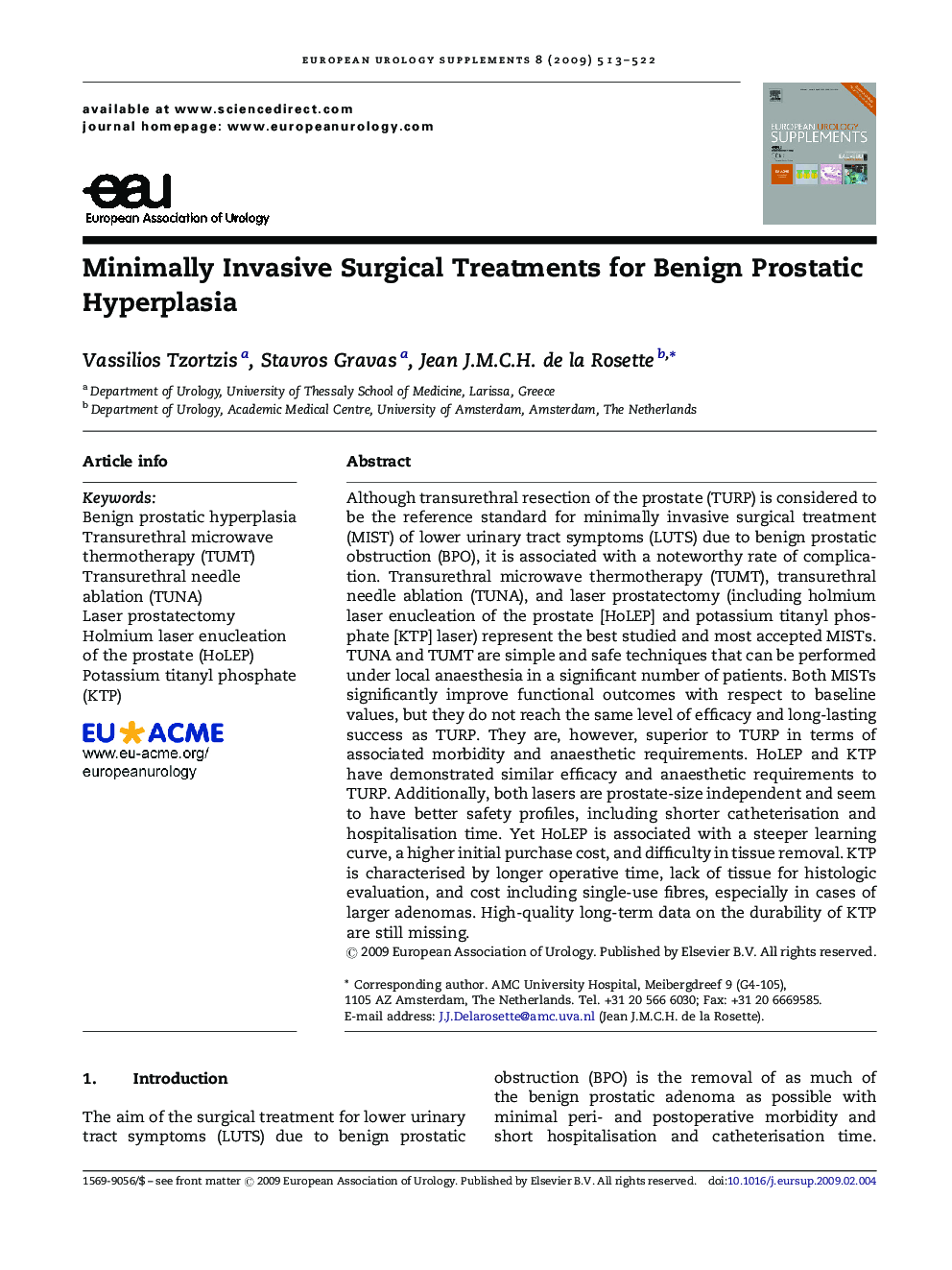| Article ID | Journal | Published Year | Pages | File Type |
|---|---|---|---|---|
| 3933899 | European Urology Supplements | 2009 | 10 Pages |
Although transurethral resection of the prostate (TURP) is considered to be the reference standard for minimally invasive surgical treatment (MIST) of lower urinary tract symptoms (LUTS) due to benign prostatic obstruction (BPO), it is associated with a noteworthy rate of complication. Transurethral microwave thermotherapy (TUMT), transurethral needle ablation (TUNA), and laser prostatectomy (including holmium laser enucleation of the prostate [HoLEP] and potassium titanyl phosphate [KTP] laser) represent the best studied and most accepted MISTs. TUNA and TUMT are simple and safe techniques that can be performed under local anaesthesia in a significant number of patients. Both MISTs significantly improve functional outcomes with respect to baseline values, but they do not reach the same level of efficacy and long-lasting success as TURP. They are, however, superior to TURP in terms of associated morbidity and anaesthetic requirements. HoLEP and KTP have demonstrated similar efficacy and anaesthetic requirements to TURP. Additionally, both lasers are prostate-size independent and seem to have better safety profiles, including shorter catheterisation and hospitalisation time. Yet HoLEP is associated with a steeper learning curve, a higher initial purchase cost, and difficulty in tissue removal. KTP is characterised by longer operative time, lack of tissue for histologic evaluation, and cost including single-use fibres, especially in cases of larger adenomas. High-quality long-term data on the durability of KTP are still missing.
